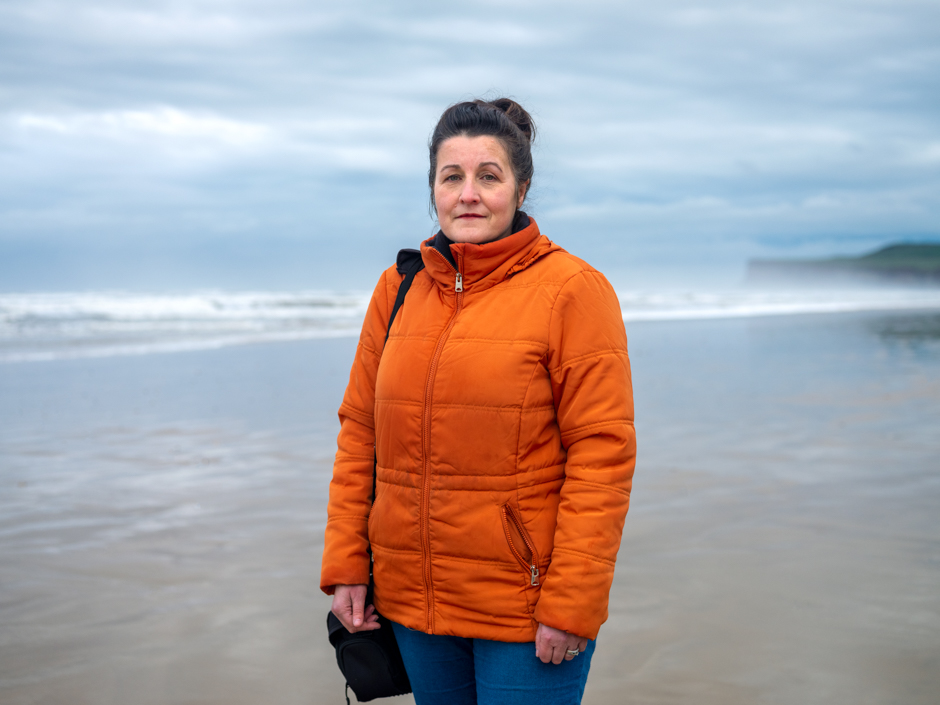It all started with crabs – Part 1 (24 October 2021)
By Tessa Bunney on 28 March 2023As time has trundled on since 24th October 2021 when tens of thousands of dead and dying crustaceans washed up on the beach between Redcar and Saltburn, there are only two facts which remain indisputable.
The first is that between 25th September and 5th October 2021, a 79 meter long, 3000 tonne suction hopper dredger called the UKD Orca was brought in by PD Ports (the statutory harbour authority) to undertake 6% of its annual dredging quota at the mouth of the Tees Estuary and dispose of this dredged material at Tees Bay A, a spoil site located 7 miles off the coast.
The second is that on the 26th September fishermen working bait tyres in Greatham Creek reported dead and dying shore crabs in their tyres and this phenomenon spread south, slowly at first so that only fishermen, rock-poolers, and divers noticed dead and dying crabs in the water around South Gare. But everything changed on 24th October, when a tsunami of dead and dying crabs, knee deep in places, washed up along the 6 mile stretch of beach from Redcar to Saltburn. Photos and videos quickly appeared on social media and it became apparent that signs of what was to come had been evident almost a week earlier at Coatham beach, half a mile North of Redcar and closer to the area where the UKD Orca had dredged. Videos and photographs showed the scale and variety of creatures caught up in the carnage, puffer fish, flat fish and lobsters, but by far the worst affected were crabs. Mountains of empty shells which had once housed the bodies of shore, edible, harbour and velvet swimming crabs were strewn amongst battered crab legs and claws, and whilst most were dead, some were still alive, laying on their backs, twitching and blowing bubbles that glistened like oil. Many people tried to save them by carrying them back into the sea, but by then it was far too late, and for many of us (myself included) who left our houses that morning to walk our dogs, or breathe in the fresh sea air only to find we were wading through bodies of dead and dying sea-creatures, it’s a sight which will haunt us for the rest of our lives.
Sharon Bell is a photographer and a cake maker who has lived in Marske for 23 years and walks her dog on the beach every morning.

Sharon Bell, Marske, October 2022
“My husband and I came down in the morning walking the dog to photograph the sunrise, it was the backend of October (2021). We just came down the steps like we normally do… as we got closer we realised what was there… we’d never seen anything like it before. There was every size of crab, every colour, crabs I’d never seen before, great big king crabs with the big legs down to the tiniest things, there were mothers on their backs with egg sacs still on them. There was every age of lobster, bright blue lobsters, every colour. You couldn’t walk for standing on them, they were crunching under your feet… At some parts it was up to our knees and one part heading towards Saltburn it was nearly up to our waist. The first words I said to my husband was ‘this is not normal’. When we were looking at the ones still alive, we thought they were having fits, they were really sort of twitching and then some of them looked like they were drunk, they were trying to walk but it was like they’d forgotten how to do it. And the ones on their backs they were all bubbling and foaming.” Sharon Bell.
In the fifty years she’s lived in the area Sharon had never seen a wash-up of the magnitude that occurred 24thOctober, and as soon as it happened, up and down the coast people started asking questions. What had gone wrong? What had happened in the sea to cause an extinction event on this scale? If it was something that had taken place on land it may not have posed such a mystery; a field full of dead sheep surrounded by paw prints leading from a gap in the fence, or a pheasant with impact injuries laid at the side of a road doesn’t take a detective to figure out what’s happened, because everyone can see the cause, and we are familiar with the elements involved. But since the evolutionary process relieved humans of our gills (according to Professors Zhikun Gai & Min Zhu of the Chinese Academy of Sciences the human middle ear evolved from fish gills*) most people’s experience of the sea is limited to staring at the surface while scoffing fish and chips, or brief glimpses of a golden seabed on holiday, which means that unless you are a scuba diver, a free-diver or a marine biologist, the mystery of the marine world is so alien that a simple question like ‘What’s gone wrong?’ causes a lot of head scratching, even for marine biologists. Although in a world of social media and arm-chair experts, local facebook pages were awash with theories!

Photos courtesy of Sharon Bell, October 2021
Thanks to some big hitters in the media (The Times, The Guardian) and celebrities like Chris Packham, Fergal Sharkey drawing attention to the appalling state of our oceans and waterways, many people are aware of the extent of Government sanctioned destruction of the marine environment through overfishing, plastic and chemical pollution, spills from ships, sewage discharge, agricultural wash-offs to name a few, and theories pointed the finger at all these usual suspects. Was it sewage discharge from the many overflows along the coastline? Was it a chemical spill from a cargo ship? Could it have been a natural event? Was it even safe to go in the water?
Helen Taylor